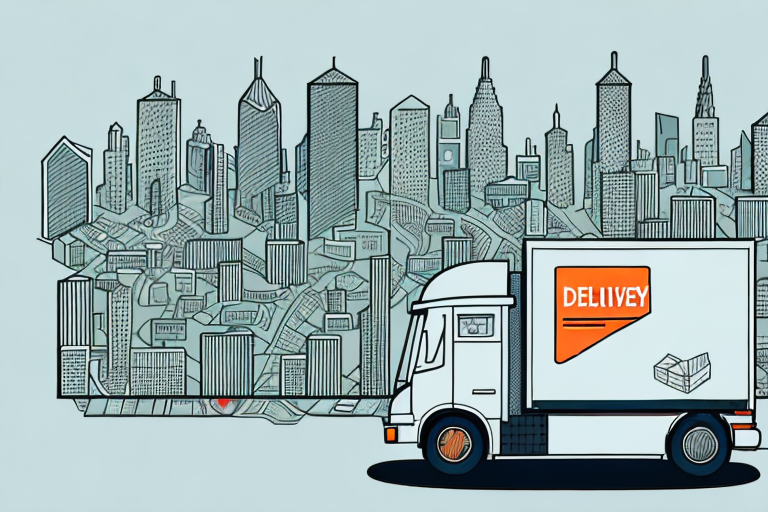Maximizing Efficiency with Delivery Management Solutions
Introduction
In today's fast-paced business environment, efficient delivery management is essential for success in the retail and logistics sectors. Effective delivery management involves coordinating the movement of goods from their origin to the customer's doorstep, ensuring timely, reliable, and cost-effective deliveries. Advanced delivery management solutions leverage various tools and technologies to track shipments, manage inventory, and optimize delivery routes, thereby enhancing overall operational efficiency.
Importance of Delivery Management for Business Success
Efficient delivery management is a critical factor in maintaining customer satisfaction and loyalty. According to a McKinsey report, optimized delivery processes can lead to a 15% increase in customer satisfaction and a 10% reduction in operational costs. Poor delivery management can result in delays, missed deliveries, and damaged products, which not only tarnish a company's reputation but also lead to significant revenue losses.
Key Benefits of Implementing Delivery Management Solutions
- Cost Reduction: Streamlining delivery processes minimizes fuel consumption and reduces labor costs.
- Improved Customer Satisfaction: Real-time tracking and timely deliveries enhance the customer experience.
- Increased Efficiency: Automated systems reduce manual errors and speed up operations.
- Environmental Sustainability: Optimized routes lead to lower carbon emissions.
Additionally, delivery management solutions provide businesses with actionable insights through data analytics, enabling informed decision-making and continuous improvement.
Types of Delivery Management Solutions
Route Optimization Software
Helps businesses determine the most efficient delivery routes, reducing fuel consumption and travel time. Tools like Geopointe offer advanced route planning features.
Inventory Management Systems
Allows businesses to track inventory levels in real-time, preventing stockouts and overstocking. Solutions such as Oracle Inventory Management provide comprehensive tracking capabilities.
Shipment Tracking Tools
Provide real-time visibility into the status of shipments, enhancing transparency for both businesses and customers. Platforms like FedEx Tracking are widely used for this purpose.
Last-Mile Delivery Software
Focuses on the final leg of the delivery process, ensuring efficient and timely deliveries to the customer's location. Solutions such as Queue-it specialize in last-mile optimization.
Selecting the Right Delivery Management Solution
Assessing Business Needs
Evaluate your delivery volume, types of products, and service areas to determine the necessary features in a delivery management solution.
Scalability and Flexibility
Choose a solution that can grow with your business and adapt to changing requirements. Cloud-based solutions like Shopify offer scalability and flexibility.
Integration Capabilities
Ensure the solution can integrate seamlessly with your existing systems such as CRM, ERP, and inventory management tools to streamline operations.
Customer Support and Training
Opt for providers that offer robust customer support and comprehensive training resources to facilitate smooth implementation and usage.
Integrating Delivery Management with Other Business Processes
Integration with other business tools like Customer Relationship Management (CRM) systems and Transportation Management Systems (TMS) enhances operational efficiency. For instance, integrating with a CRM like Salesforce allows for better customer data management and personalized delivery experiences.
Benefits of Integration
- Streamlined Operations: Reduces manual data entry and minimizes errors.
- Enhanced Visibility: Provides a comprehensive view of the supply chain.
- Improved Decision-Making: Facilitates data-driven strategies and optimizations.
Future Trends in Delivery Management Technology
Artificial Intelligence and Machine Learning
AI and ML are revolutionizing delivery management by predicting demand patterns, optimizing routes in real-time, and enhancing customer service through chatbots and automated updates.
Autonomous Vehicles and Drones
The use of autonomous delivery vehicles and drones is expected to increase, providing faster and more efficient last-mile deliveries while reducing labor costs.
Blockchain for Transparency
Blockchain technology offers enhanced transparency and security in the delivery process by providing immutable records of transactions and shipments.
Best Practices for Implementing a Delivery Management System
Define Clear Objectives
Establish specific goals such as reducing delivery times, cutting costs, or improving customer satisfaction to guide the implementation process.
Comprehensive Training
Provide thorough training for all stakeholders to ensure effective use of the new system and to minimize resistance to change.
Monitor and Evaluate Performance
Use key performance indicators (KPIs) like on-time delivery rates, delivery costs, and customer feedback to assess the system's effectiveness and make necessary adjustments.
Ensure Data Accuracy
Maintain high-quality data entry and regular audits to ensure the reliability of the delivery management system.
Measuring the Success of Your Delivery Management Solution
To evaluate the effectiveness of your delivery management solution, track the following KPIs:
- On-Time Delivery Rate: Percentage of deliveries made on or before the scheduled time.
- Delivery Cost: Total cost associated with the delivery process, including fuel, labor, and maintenance.
- Customer Satisfaction: Measured through surveys and feedback regarding the delivery experience.
- Order Accuracy: Percentage of orders delivered without errors.
Regularly analyzing these metrics will help identify areas for improvement and ensure that the delivery management system is delivering the desired outcomes.
Case Studies: Successful Implementations of Delivery Management Solutions
Amazon
Amazon has mastered delivery management through its extensive network of fulfillment centers and advanced logistics technologies. By utilizing robotics and AI, Amazon ensures rapid and accurate deliveries, maintaining high levels of customer satisfaction.
Walmart
Walmart implemented a comprehensive delivery management solution that integrates inventory management with real-time tracking. This integration allows customers to track their orders accurately and receive timely notifications, enhancing the overall shopping experience.
UPS
UPS uses advanced route optimization software to manage its vast delivery network. The company’s ORION (On-Road Integrated Optimization and Navigation) system optimizes delivery routes, saving millions of miles and reducing fuel consumption annually.
Conclusion and Key Takeaways
Delivery management solutions are indispensable for businesses aiming to enhance their delivery processes, reduce costs, and improve customer satisfaction. By selecting the right solution tailored to your business needs, integrating it with other systems, and adhering to best practices, you can achieve significant operational efficiencies and drive long-term success. Staying abreast of future trends and continuously measuring performance will ensure your delivery management system remains effective and competitive in a rapidly evolving market.




















